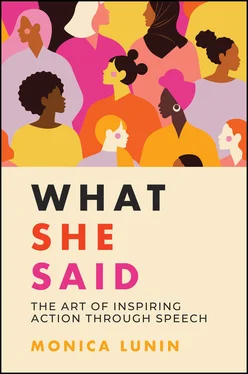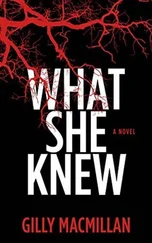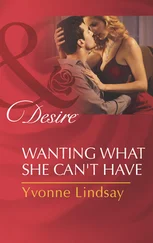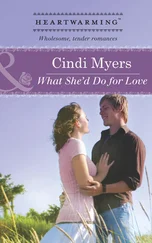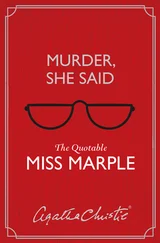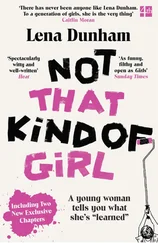Monica Lunin - What She Said
Здесь есть возможность читать онлайн «Monica Lunin - What She Said» — ознакомительный отрывок электронной книги совершенно бесплатно, а после прочтения отрывка купить полную версию. В некоторых случаях можно слушать аудио, скачать через торрент в формате fb2 и присутствует краткое содержание. Жанр: unrecognised, на английском языке. Описание произведения, (предисловие) а так же отзывы посетителей доступны на портале библиотеки ЛибКат.
- Название:What She Said
- Автор:
- Жанр:
- Год:неизвестен
- ISBN:нет данных
- Рейтинг книги:4 / 5. Голосов: 1
-
Избранное:Добавить в избранное
- Отзывы:
-
Ваша оценка:
- 80
- 1
- 2
- 3
- 4
- 5
What She Said: краткое содержание, описание и аннотация
Предлагаем к чтению аннотацию, описание, краткое содержание или предисловие (зависит от того, что написал сам автор книги «What She Said»). Если вы не нашли необходимую информацию о книге — напишите в комментариях, мы постараемся отыскать её.
What She Said
What She Said
What She Said — читать онлайн ознакомительный отрывок
Ниже представлен текст книги, разбитый по страницам. Система сохранения места последней прочитанной страницы, позволяет с удобством читать онлайн бесплатно книгу «What She Said», без необходимости каждый раз заново искать на чём Вы остановились. Поставьте закладку, и сможете в любой момент перейти на страницу, на которой закончили чтение.
Интервал:
Закладка:
As for her coming without that preparation, without that effort on our part, without that determination that when she is born again she shall find it possible to live and write her poetry, that we cannot expect, for that would be impossible. But I maintain that she would come if we worked for her, and that so to work, even in poverty and obscurity, is worthwhile.
HOW SHE DID THAT
Invite the audience to do the work
At the time of this speech, Virginia Woolf was an author practised in the art of fiction, so she was adept at conjuring the imaginary world to make her point. In ‘Shakespeare's sister’ she creates a character, derived from a period in history, in the form of William Shakespeare's sister (whom she calls Judith), and she weaves for us a tale of what her life might have been like if we assume she possessed the same talents and drive as her brothers. Rather than telling us all the ways in which women were unfairly treated, she shows us through a tale of her own creation.
Woolf spells out her technique, telling us explicitly, ‘I prefer, therefore, to put it in the form of fiction’. She steps in and out of the storyteller's shoes. When indulging in the fiction, she allows herself all of the expressive language and imagery that she is known for, bringing the story — and the injustice — to life. It is pleasing to follow her off on one tangent and then another, because somehow we know we are to extract the meaning from the tale.
In this story fragment, we are given a character, a setting and a struggle. With a few expert literary flourishes, Woolf provides us with all we need to come to our own realisation. Although technically her words were delivered as a lecture, they were not ‘lecturing’ in their delivery. Instead, a certain amount of faith is placed in the women from Cambridge to draw their own inferences and form personal impressions from the imagined life of Shakespeare's sister.
You don't need to play to the lowest (and least imaginative) common denominator in your audience. If you can find a way to present your ideas as a narrative — or even an image, example or allegory — and you can do it with panache, you might be able to make an even stronger impact. Could it be that your audience will be more convinced if they, themselves, decipher the moral of the story, as it were?
Use contrast to highlight your point
By using the very creative device of the imagined story of William Shakespeare's sister, Virginia Woolf is able to play with various rhetorical techniques, most notably the principle of contrast. Simply put, we are more able to notice the attributes of a particular thing when it is presented alongside something that is different.
Woolf creates her character and asks a simple question (of herself and her audience): what if the sister held similar aspirations to the brother? By creating this imagined parallel universe that runs alongside what we all already know of Shakespeare's success, Woolf amplifies her thesis. She doesn't have to lecture us of the inequalities and injustices the sister would have had to endure; we see it for ourselves, in sharp relief.
We can imagine the frustration of a woman pursuing a literary career when continually confronted with ridicule and the banal reality of bearing children and washing the dishes. The audience can conjure its own images of William Shakespeare kicking up his heels in a tavern or the court of Queen Elizabeth I, while his sister is doomed to a fate of domestic drudgery, beatings, forced marriage and terminal marginalisation.
Contrast sits at the very heart of Virginia Woolf's device — the imagined, disempowered life of Judith Shakespeare and the actual life of William Shakespeare. The brother's opportunity is contrasted with the sister's repression, the brother's education with the sister's benightedness, the brother's liberty with the sister's subjugation.
The overall impression Woolf seeks to create is one of oppression, which readies the audience for her eventual, somewhat enigmatic words of advice:
… if we have the habit of freedom and the courage to write exactly what we think; if we escape a little from the common sitting-room and see human beings not always in their relation to each other but in relation to reality; if we face that there is no arm to cling to, but that we go alone and that our relation is to the world of reality and not only to the world of men and women, then the opportunity will come and the dead poet who was Shakespeare's sister will put on the body which she has so often laid down.
Expose the mechanics of your persuasion
From the very beginning of her lecture, Virginia Woolf shares her own creative meanderings. When considering the subject of women in fiction and working through what to say she tells her audience she ‘sat down on the banks of a river and began to wonder what the words meant’. Throughout the speech, Woolf steps in and out of the roles of the advice giver, the storyteller and the speechmaker.
She goes on to tell us the central component of her idea, at once also sharing its limitations. Then she tells us she will take us through how she arrived at this opinion. Later, she indicates when she will be moving on to the peroration, or conclusion, of the lecture. It is as though she is exposing the formwork of her talk — in the same way as Brecht's plays in the 1920s aimed to expose the mechanisms of theatre — and I like to think this was, like Brecht, purposely done because it most definitely enhances the piece.
This is a useful and quite straightforward technique to use in your own presentations. When you have been invited to share your thoughts or personal experience and you are not sure how to structure your talk, perhaps, like Woolf, you could start with the topic you were given. Make it personal and begin with a first-person exposé of how you relate to the topic. ‘Shakespeare's sister’ is an enchanting example of how a speaker can think out loud, drawing their audience in and making them part of the wonder of discovery.
Note
1 *A church leader.
2 Sharing complex thoughts and ideas
Your expertise has no value to the world if it cannot be understood.
For your ideas to take hold, inspire others and create change, they must be transmitted. There is so much opportunity for confusion. Your audience will get confused if they don't understand the terms you're using or don't have the background knowledge required to appreciate the concepts. Even experts can become confused when delivering information because they have so much detail in their heads and a particularly deep understanding of their own field that they don't know where to start. Sometimes they jump around in their delivery, trying to fill in gaps, and then become overwhelmed or discouraged because their audience is just not getting it.
When planning a speech or presentation where you need to share complex ideas, first consider why the audience needs to know what you have to share. Decide on the most important benefit for them and then clarify their current level of understanding. In a broad sense, your job is to break down your concepts into their component parts and communicate each part in a manner that can be understood. You will need to make things as simple as possible, but no simpler. Before you craft your speech or presentation think about the audience, and then work out how to bridge the gap from the known to the unknown.
The speeches in this chapter are examples of women who have bridged this gap. Many of us have enjoyed learning about new concepts from the TED stage. Beginning in 1984 as a conference where Technology, Entertainment and Design converged, this lecture series now covers almost all topics — with the ambitious goal of lifting awareness in an age of reduced attention spans. Brené Brown's TED Talk on ‘The power of vulnerability' is a master example of deep expertise made accessible to the mass market. Part of the secret here is to put yourself in the story. Brown takes the audience with her on her own journey of exploration and discovery. Who knew social science research could be so life-changing?
Читать дальшеИнтервал:
Закладка:
Похожие книги на «What She Said»
Представляем Вашему вниманию похожие книги на «What She Said» списком для выбора. Мы отобрали схожую по названию и смыслу литературу в надежде предоставить читателям больше вариантов отыскать новые, интересные, ещё непрочитанные произведения.
Обсуждение, отзывы о книге «What She Said» и просто собственные мнения читателей. Оставьте ваши комментарии, напишите, что Вы думаете о произведении, его смысле или главных героях. Укажите что конкретно понравилось, а что нет, и почему Вы так считаете.
